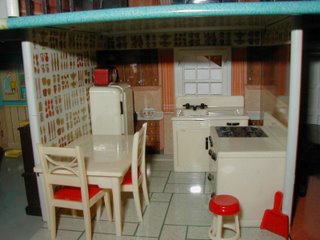 All summer, ever since we replaced our ancient Weber grill with a new one, we (mainly Len) have been working on barbecue techniques.
All summer, ever since we replaced our ancient Weber grill with a new one, we (mainly Len) have been working on barbecue techniques.A meat thermometer is one of our new devices -- it is extremely effective. We actually bought it to use for the espresso machine, to see that the foam comes up to the right temperature (also Len's department).
Google helped too. We found a handy table of meat types and required temperatures here. You can see that the lamb steak in the picture has not yet reached 125º -- shortly after the photo, we ate it very rare and it was delicious! Len says next time he will poke the sensor in closer to the bone, for better measurement.
For the record: before we cooked the lamb, I basted it with hoi-sin sauce, soy sauce, and a bit of lemon juice for around an hour. And we used the chimney-like lighter to get the hardwood charcoal going. That's all the new techniques from last night.






















































